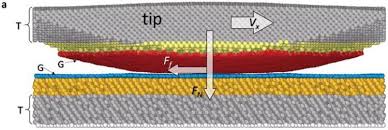HPV Genital anal warts treatment center of America. The only center in the world providing HPV BCR™️ method with the best permanent outcome. HPV BCR™️
Doctors may use one or both of these methods after they numb the area. Electrosurgery burns the wart with an electric charge through the tip of a needle. It's good for common warts, filiform warts, and foot warts. Your doctor could also use a laser. Curettage is scraping off the wart with a sharp knife or small, spoon-shaped tool. Another option is excision, slicing the wart off or cutting it out with a sharp blade.
For stubborn warts, peeling creams with glycolic acid, stronger salicylic acid, or tretinoin could do the trick. Diphencyprone (DCP) and imiquimod (Aldara) irritate your skin to encourage your immune system to go to work there. 5-Fluorouracil is a cancer medicine that may stop your body from making extra skin cells the same way it stops tumors from growing. Your doctor may use a needle to put medicine into the wart to help get rid of it. Bleomycin, a cancer drug, may stop infected cells from making more. Interferon boosts your immune system to better fight the HPV, typically for genital warts.
Warts are raised bumps on your skin caused by the human papillomavirus (HPV). Warts have plagued humans for thousands of years — they have been discoveredTrusted Source on a 3,000-year-old mummy and were mentioned by Shakespeare. Although warts generally aren’t dangerous, they can be uncomfortable, potentially embarrassing, and contagious. They can also be painful. However, warts can be treated, either at home or by a medical professional. Common wartsusually grow on the backs of your fingers and toes and on the knees. But they can appear elsewhere. They can have a rough, thick, grainy appearance and a rounded top. They may appear cauliflower-like. Common warts are often grayer than the surrounding skin.
Plantar warts grow on the soles of the feet. Unlike other warts, plantar warts grow into your skin, not out of it. You can tell you have a plantar wart if you notice what appears to be a small hole in the bottom of your foot that is surrounded by hardened skin. Plantar warts can make walking uncomfortable. Flat warts, also known as juvenile warts, usually grow on the face, thighs, or arms. They are often caused by HPV types 3, 10, and 28.
ANAL WARTSThey are small and not immediately noticeable. Flat warts have a flat top, as if they’ve been scraped. They can be flesh-colored, pink, brownish, or slightly yellow. They often grow in large groups of 20 to 200. Flat warts are not typically painful and tend to appear in areas where there is a cut or break in your skin, such as from shaving your face or legs. They are also common in children and can be spread through direct contact.
Warts are a type of skin infection caused by the human papillomavirus (HPV). The infection causes rough, skin-colored bumps to form on the skin. The virus is contagious. You can get warts from touching someone who has them. Warts most commonly appear on the hands, but they can also affect the feet, face, genitals and knees.
Small, noncancerous growths appear when your skin is infected with one of the many viruses of the human papillomavirus (HPV) family. The virus triggers extra cell growth, which makes the outer layer of skin thick and hard in that spot. While they can grow anywhere you have skin, you're more likely to get one on your hands or feet. The type of wart depends on where it is and what it looks like.
.jpg)











You are welcome to share your ideas with us in comments.